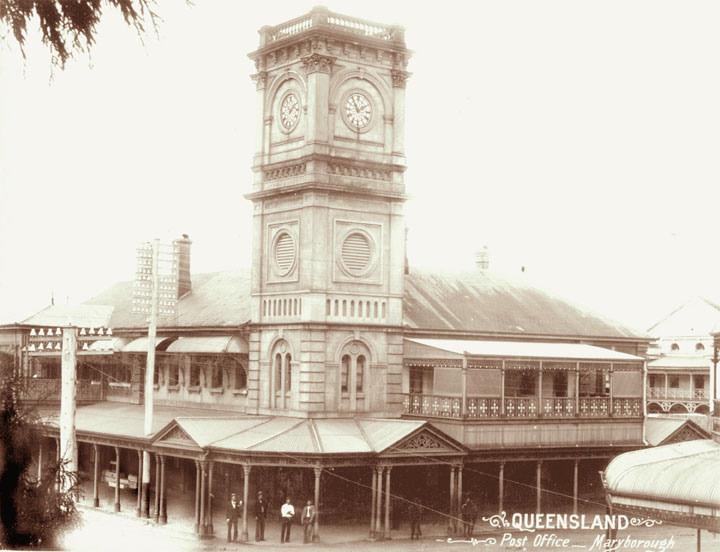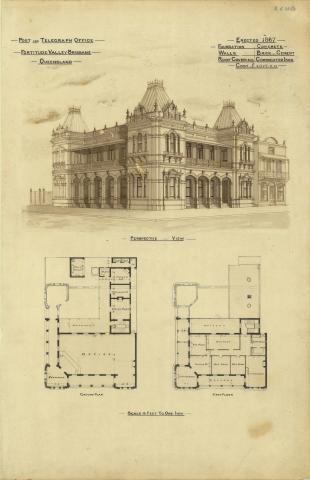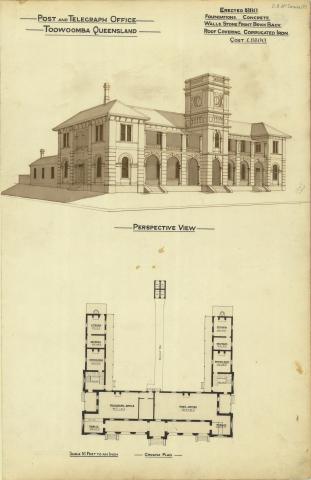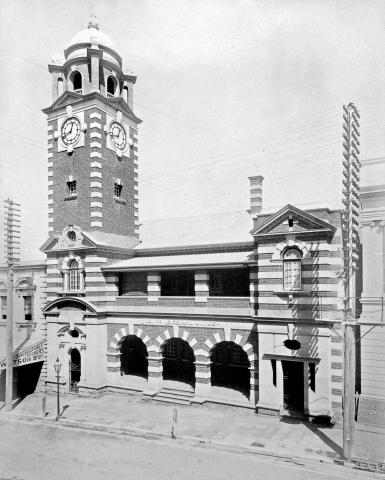
- News of the day
-
Maryborough Chronicle, Wide Bay and Burnett Advertiser, Thursday 24 June 1937, page 2
MARYBOROUGH POST OFFICE CLOCK
P.M.G.'s Reply to Dr. Page
Mr. B. H. Corser, has received the following letter from the Acting Prime Minister (Dr. Page) which is a reply by the Postmaster General to the representations of Dr. Page on behalf of a deputation which met him in Maryborough recently asking that a new Post Office Clock be provided at the Post Office:—
“With reference to your letter of June 1 concerning the department's attitude to the question of a tower clock for the Maryborough Post Office, the explanation is that public notification of the time of day is no longer regarded as the function of the Post Office, and is held to be one for the attention of the civil authorities.
“During the latter part of 1935, when extensive renovations were being made to the local postal premises at Maryborough, the City Council completed the erection of a public clock in the Town Hall tower and notified the Department that the servicing of the clock in the Post Office tower would automatically cease with the operation of the Town Hall clock. The Post Office clock was accordingly dismantled, and with the acquiescence of the council the clock faces were bricked up. The clock was subsequently disposed of.
“In the circumstances it is regretted that the department Is unable to see its way to incur the expenditure of providing another clock. The matter will receive further consideration, however, if the council is prepared to provide a new clock and agree to maintain and (if desired) illuminate it at the council's expense, and also reimburse the cost of the associated building alterations.” - Background
-
The Maryborough Post Office was constructed to designs prepared by Colonial Architect, Charles Tiffin, beginning in 1865. The post office is the oldest post office known to survive in Queensland, and is one of three remaining masonry post offices from the period between Queensland’s separation from New South Wales in 1859 and the amalgamation of the post and telegraph departments in 1878. The post offices at Maryborough and Rockhampton were designed concurrently and, due to the high cost of building materials in Rockhampton, the tender for construction of Rockhampton Post Office was exceeded. This problem was allegedly solved by the exchange of the less expensive Maryborough design with Rockhampton’s. The elevations for Maryborough Post Office refer to Denham and East Streets (in Rockhampton), rather than Bazaar and Wharf Streets. The building constructed in Maryborough (Rockhampton’s design) was designed for an eastern orientation rather than a western orientation, and hence it lacked the appropriate sun shading.
In 1869 a single faced clock, facing Wharf Street, was installed in the third level of the tower. The Wharf Street loggia was enclosed in 1875-77 by contractors J and J Rooney to increase accommodation and improve lighting and ventilation. A further storey was added to the corner tower in 1879-80, allowing the installation of a four dialled clock and bells, which was officially started on 9 December 1879 (the clock was dismantled in 1935). The first country telephone exchange was opened in Maryborough in November 1882, and a new wing constructed to house the expanding operation in 1885, as well as the enclosure of the Bazaar Street loggia. As a result of the enclosure of both loggias, the ground floor offices were not protected from the summer heat. This necessitated the construction of a corrugated iron awning supported by cast iron columns over the Bazaar Street footpath and the attachment of cast iron framed corrugated iron sunshades to the first floor level windows on both facades. In addition, a timber-framed balcony replaced the sunshades to the first floor level of the postmaster’s quarters in 1896. Internal alterations were undertaken in 1906 and 1925, and a separate building for the telephone exchange was added in 1948. The building underwent further additions and alterations, including the reopening of the Bazaar Street loggia, during the 1950s and 1960s.
Courtesy of the Australian Heritage Database
/152.7041056,-25.5377169,7/450x450@2x.png?access_token=pk.eyJ1IjoicXNhLWRpc2NvLXFsZCIsImEiOiJjamJmdTgyZXEyeWNjMnlxZm8xcmtieHgxIn0.lmT9J5tTPKGuuccQgCVSAg)



